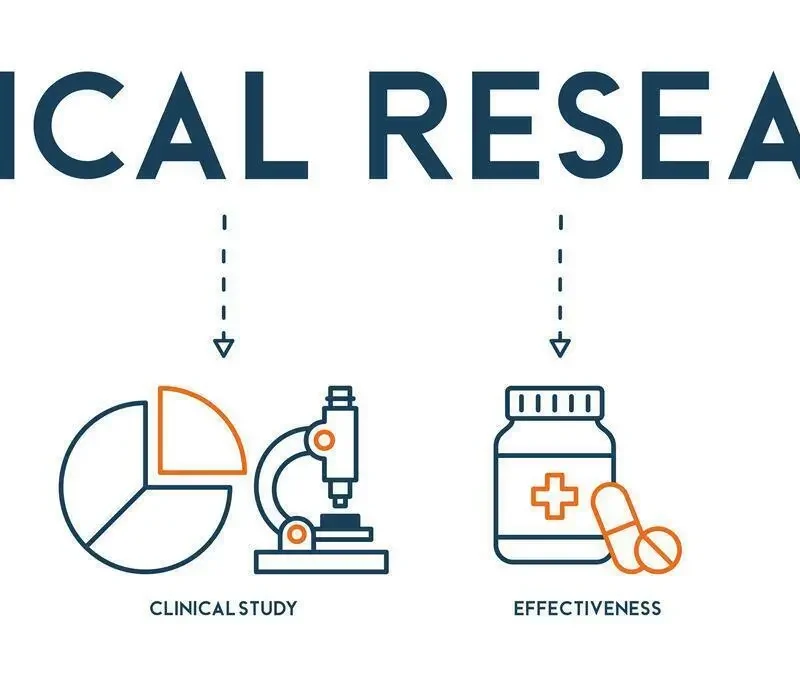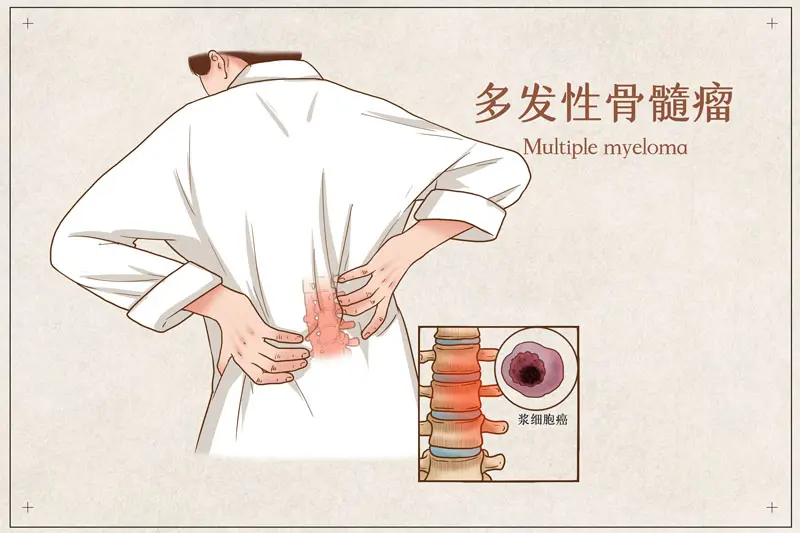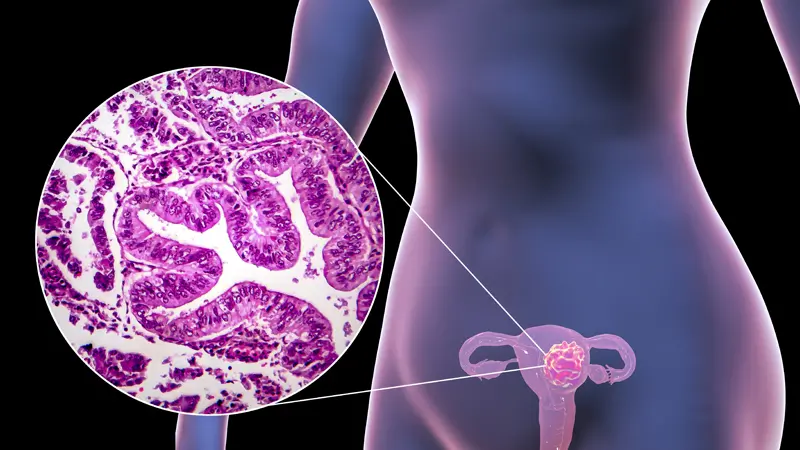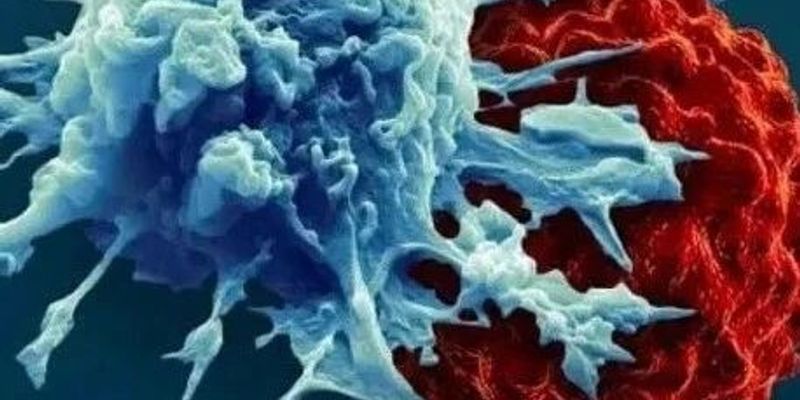神经内分泌肿瘤(NENs)是一组高度异质性的恶性肿瘤,起源于全身广泛分布的神经内分泌细胞。这类肿瘤通常高表达生长抑素受体(SSTR),这为核医学的精准诊断和靶向治疗提供了独特的机会。随着医学技术的不断进步,核医学在NENs的诊疗中扮演着越来越重要的角色,从早期的全身扫描到如今的分子影像技术,以及基于“多肽-受体”的放射性核素治疗(PRRT),都为患者带来了新的希望。为了指导我国NENs核医学精准诊疗的规范化应用,中华医学会核医学分会联合相关专家制定了《神经内分泌肿瘤核医学精准诊疗临床指南(2025版)》。
获取全面的药物信息和诊疗指南,请访问MedFind的抗癌资讯平台。
SSTR显像在NENs诊断中的临床应用
生长抑素受体(SSTR)是NENs细胞表面高表达的G蛋白偶联受体家族糖蛋白,其中SSTR2、SSTR3和SSTR5亚型表达最高。利用放射性核素标记的生长抑素类似物(SSA)作为显像剂,通过SSTR显像技术,可以实现NENs的精准诊断和评估。
显像方法与显像剂选择
目前,SSTR显像主要分为SPECT/CT和PET/CT或PET/MRI两种。SPECT/CT显像成本较低,可及性高,常选用99mTc-奥曲肽等作为显像剂。而PET/CT或PET/MRI虽然花费较高,但在空间分辨率、图像质量和定量准确性方面更具优势,可采用68Ga-DOTA-TATE或68Ga-DOTA-TOC等作为显像剂。近年来,以JR11、LM3为代表的SSTR拮抗剂类显像剂,如68Ga-DOTA-JR11,在肝脏病变检出方面展现出良好前景。
SSTR显像的适应证
SSTR显像在NENs的诊断、分期、疗效评估、复发监测及预后判断等方面具有重要价值:
- 诊断方面:适用于具有NENs相关生化证据和临床症状,但常规影像学检查结果为阴性的患者;或疑似NENs但活检困难,需进一步评估病灶特征或寻找更适合活检病灶的患者;对已确诊NENs转移的患者,可用于寻找原发灶。
- 分期方面:用于病理已确诊的NENs首次分期,或拟手术NENs患者的术前分期。
- 疗效评估方面:用于SSTR高表达肿瘤的手术、介入治疗、靶向治疗、放疗、化疗等的疗效评估,弥补常规影像学检查的不足。
- 复发监测方面:用于临床或实验室提示进展患者的再分期,特别是在常规影像学检查结果为阴性或发现新病变但不确定是否为进展时。
- 预后判断方面:SSTR显像高摄取的NENs患者可从靶向SSTR的PRRT治疗或SSA治疗中获益更多;SSTR显像结果为阳性而18F-FDG显像结果为阴性提示预后更佳。
SSTR显像的判读
建议使用SSTR显像的报告和数据系统(SRI-RADS)进行分级判读,该系统以血池、肝脏摄取为界值,充分考虑好发部位和各种假阳性可能,有助于规范评估结果。

“多肽-受体”介导的NENs放射性核素治疗(PRRT)
PRRT是一种利用放射性核素标记多肽,针对特定受体的靶向治疗策略。其原理是采用177Lu和225Ac等放射性核素标记SSA,通过与NENs细胞表面高表达的SSTR特异性结合及内化,借助核素衰变发射的β或α射线诱导肿瘤细胞DNA损伤,从而选择性杀伤肿瘤细胞。
治疗性核素及靶向分子选择
- 治疗性核素:177Lu因其优异的物理性能(合适的β射线能量、半衰期和可用于显像的γ射线)被推荐为首选。90Y的β射线能量较高,适用于治疗SSTR高表达的较大肿瘤。发射α射线的225Ac等具有更强的杀伤力,可在177Lu和/或90Y治疗效果欠佳时选择使用。
- 靶向分子:为达到最佳治疗效果,核素标记的靶向多肽应在肿瘤中保持高摄取,而在正常组织中低摄取。可选用177Lu或90Y标记的DOTA-TATE或DOTA-TOC进行治疗。优化药代动力学的多肽如DOTA-EB-TATE,可减少放射性核素用量,提高效价。
PRRT的适应证和禁忌证
- 适应证:目前建议用于手术不能切除的经病理证实的晚期NENs,要求SSTR高表达(SSTR显像至少高于肝脏摄取),卡氏功能状态评分(KPS)至少为50分,或东部肿瘤协作组(ECOG)状态评估不超过2级,预期生存时间3个月以上。
- 禁忌证:绝对禁忌证包括妊娠、严重或急性并发症、不可控制的精神障碍。相对禁忌证包括哺乳期、骨髓储备功能不佳、肝功能不全、肾功能不全或严重心功能不全。
PRRT治疗前、治疗中和治疗后的注意事项
PRRT治疗需要严格的规范和管理:
- 治疗前:确保治疗单位、场所和医务人员具备相应资质;对患者进行全面评估,确认符合适应证且无禁忌证;充分了解合并用药和治疗,并与患者充分沟通,签署知情同意书。
- 治疗中:遵循规范的诊治流程,包括给药剂量、方式和疗程间隔;采取充分的放射防护措施;对类癌危象、呕吐等副作用有预防和应急措施;正确使用肾脏保护剂。
- 治疗后:及时、充分地观察、监测和处理副作用,特别是血象和肝、肾功能的变化;恰当、准确地进行疗效评估;严格掌握出院标准并落实患者出院宣教。
- 后续治疗:如治疗有效且副作用可接受,建议间隔6~12周后继续治疗,一般治疗4~6个疗程。此后再进展,若预期患者仍可通过PRRT获益,可选择补救治疗。

靶向其他靶点和途径的分子影像诊断及靶向核素治疗
除SSTR外,NENs的精准诊疗还可靶向其他分子途径:
- 18F-FDG PET/CT或PET/MRI糖代谢显像:适用于高级别神经内分泌瘤(NETs)及神经内分泌癌(NEC)等高代谢肿瘤的评估和预后。
- 儿茶酚胺合成代谢显像及核素靶向治疗:可选择18F-DOPA PET/CT或PET/MRI用于NENs的诊断和评估;131I-间位碘代苄胍(MIBG)SPECT或SPECT/CT用于嗜铬细胞瘤、副神经节瘤的诊断、评估及指导131I-MIBG核素治疗。新型示踪剂18F-MFBG PET/CT或PET/MRI具有更高的图像清晰度。
- GLP-1R显像:可选择68Ga-Exendin-4 PET/CT或PET/MRI用于胰岛素瘤的诊断和评估,因胰高血糖素样肽-1受体(GLP-1R)在90%以上的胰岛素瘤中高表达。
- CXCR4显像:可选择68Ga-Pentixafor PET/CT或PET/MRI用于促肾上腺皮质激素垂体瘤等的诊断和评估,趋化因子受体4(CXCR4)在高级别NETs及NEC中检出能力更高。
- 多靶点互补结合显像:如68Ga-TATE-RGD PET/CT或PET/MRI,同时靶向SSTR2和整合素αVβ3,可检出更多NENs肝转移,弥补单一靶点显像的不足。
总结
神经内分泌肿瘤的核医学精准诊疗技术,包括SSTR显像和放射性核素治疗,已在国际上得到广泛应用和认可。本指南结合国际最新研究进展和我国临床实践特点,旨在为国内NENs核医学精准诊疗提供规范化指导。随着技术的不断发展和完善,NENs患者将获得更精准、更有效的治疗方案。
对于海外靶向药的获取,MedFind提供便捷的代购服务,详情请访问MedFind药品代购。在治疗决策过程中,您还可以利用MedFind的AI问诊服务,获取个性化建议。
参考文献
[1]Rogoza O, Megnis K, Kudrjavceva M, et al. Role of somatostatin signalling in neuroendocrine tumours[J]. Int J Mol Sci, 2022, 23(3): 1447.
[2]Wild D, Antwi K, Fani M, et al. Glucagon-like peptide-1 receptor as emerging target: Will it make it to the clinic?[J]. J Nucl Med, 2021, 62(S2): 44S-50S.
[3]刘清杏, 臧洁, 任家坤, 等. 靶向生长抑素受体的神经内分泌肿瘤核素诊断与治疗[J]. 协和医学杂志, 2020, 11(4): 370-376.
[4]Yang W D, Kang F, Chen Y, et al. Landscape of nuclear medicine in China and its progress on theranostics[J]. J Nucl Med, 2024, 65(S1): 29S-37S.
[5]Zhang J J, Wang H, Jacobson O, et al. Safety, pharmacokinetics, and dosimetry of a long-acting radiolabeled somatostatin analog 177Lu-DOTA-EB-TATE in patients with advanced metastatic neuroendocrine tumors[J]. J Nucl Med, 2018, 59(11): 1699-1705.
[6]Wang H, Cheng Y J, Zhang J J, et al. Response to single low-dose 177Lu-DOTA-EB-TATE treatment in patients with advanced neuroendocrine neoplasm: a prospective pilot study[J]. Theranostics, 2018, 8(12): 3308-3316.
[7]Liu Q X, Cheng Y J, Zang J, et al. Dose escalation of an Evans blue-modified radiolabeled somatostatin analog 177Lu-DOTA-EB-TATE in the treatment of metastatic neuroendocrine tumors[J]. Eur J Nucl Med Mol Imaging, 2020, 47(4): 947-957.
[8]Liu Q X, Zang J, Sui H M, et al. Peptide receptor radionuclide therapy of late-stage neuroendocrine tumor patients with multiple cycles of 177Lu-DOTA-EB-TATE[J]. J Nucl Med, 2021, 62(3): 386-392.
[9]Del Olmo-Garcia M I, Prado-Wohlwend S, Andres A, et al. Somatostatin and somatostatin receptors: from signaling to clinical applications in neuroendocrine neoplasms[J]. Biomedicines, 2021, 9(12): 1810.
[10]Xie Q, Liu T L, Ding J, et al. Synthesis, preclinical evaluation, and a pilot clinical imaging study of [18F]AlF-NOTA-JR11 for neuroendocrine neoplasms compared with [68Ga]Ga-DOTA-TATE[J]. Eur J Nucl Med Mol Imaging, 2021, 48(10): 3129-3140.
[11]Zhu W J, Cheng Y J, Wang X Z, et al. Head-to-head comparison of 68Ga-DOTA-JR11 and 68Ga-DOTATATE PET/CT in patients with metastatic, well-differentiated neuroendocr-ine tumors: a prospective study[J]. J Nucl Med, 2020, 61(6): 897-903.
[12]Zhu W J, Cheng Y J, Jia R, et al. A prospective, randomized, double-blind study to evaluate the safety, biodistribution, and dosimetry of 68Ga-NODAGa-LM3 and 68Ga-DOTA-LM3 in patients with well-differentiated neuroendocrine tumors[J]. J Nucl Med, 2021, 62(10): 1398-1405.
[13]Briganti V, Cuccurullo V, Di Stasio G D, et al. Gamma emitters in pancreatic endocrine tumors imaging in the PET era: is there a clinical space for 99mTc-peptides?[J]. Curr Radiopharm, 2019, 12(2): 156-170.
[14]Madrzak D, Mikołajczak R, Kamiński G. Influence of PET/CT 68Ga somatostatin receptor imaging on proceeding with patients, who were previously diagnosed with 99mTc-EDDA/HYNIC-TOC SPECT[J]. Nucl Med Rev Cent East Eur, 2016, 19(2): 88-92.
[15]Hope T A, Bergsland E K, Bozkurt M F, et al. Appropriate use criteria for somatostatin receptor PET imaging in neuroendocrine tumors[J]. J Nucl Med, 2018, 59(1): 66-74.
[16]Subramaniam R M, Bradshaw M L, Lewis K, et al. ACR practice parameter for the performance of gallium-68 DOTATATE PET/CT for neuroendocrine tumors[J]. Clin Nucl Med, 2018, 43(12): 899-908.
[17]Krenning E P, Kwekkeboom D J, Bakker W H, et al. Somatostatin receptor scintigraphy with [111In-DTPA-D-Phe1]- and [123I-Tyr3]-octreotide: the Rotterdam experience with more than 1000 patients[J]. Eur J Nucl Med, 1993, 20(8): 716-731.
[18]Balon H R, Brown T L Y, Goldsmith S J, et al. The SNM practice guideline for somatostatin receptor scintigraphy 2.0[J]. J Nucl Med Technol, 2011, 39(4): 317-324.
[19]Kwekkeboom D J, Krenning E P, Scheidhauer K, et al. ENETS consensus guidelines for the standards of care in neuroendocrine tumors: somatostatin receptor imaging with 111in-pentetreotide[J]. Neuroendocrinology, 2009, 90(2): 184-189.
[20]Bangard M, Béhé M, Guhlke S, et al. Detection of somatostatin receptor-positive tumours using the new 99mTc-tricine-HYNIC-D-Phe1-Tyr3-octreotide:first results in patients and comparison with 111In-DTPA-D-Phe1-octreotide[J]. Eur J Nucl Med, 2000, 27(6): 628-637.
[21]Bozkurt M F, Virgolini I, Balogova S, et al. Guideline for PET/CT imaging of neuroendocrine neoplasms with 68Ga-DOTA-conjugated somatostatin receptor targeting peptides and 18F-DOPA[J]. Eur J Nucl Med Mol Imaging, 2017, 44(9): 1588-1601.
[22]Virgolini I, Ambrosini V, Bomanji J B, et al. Procedure guidelines for PET/CT tumour imaging with 68Ga-DOTA-conjugated peptides: 68Ga-DOTA-TOC, 68Ga-DOTA-NOC, 68Ga-DOTA-TATE[J]. Eur J Nucl Med Mol Imaging, 2010, 37(10): 2004-2010.
[23]Pauwels E, Cleeren F, Tshibangu T, et al. [18F]AlF-NOTA-octreotide PET imaging: biodistribution, dosimetry and first comparison with [68Ga]Ga-DOTATATE in neuroendocrine tumour patients[J]. Eur J Nucl Med Mol Imaging, 2020, 47(13): 3033-3046.
[24]Kagna O, Pirmisashvili N, Tshori S, et al. Neuroendocrine tumor imaging with 68Ga-DOTA-NOC: physiologic and benign variants[J]. AJR Am J Roentgenol, 2014, 203(6): 1317-1323.
[25]Feijtel D, Doeswijk G N, Verkaik N S, et al. Inter and intra-tumor somatostatin receptor 2 heterogeneity influences peptide receptor radionuclide therapy response[J]. Theranostics, 2021, 11(2): 491-505.
[26]Krenning E P, Valkema R, Kwekkeboom D J, et al. Molecular imaging as in vivo molecular pathology for gastroenteropancreatic neuroendocrine tumors: implications for follow-up after therapy[J]. J Nucl Med, 2005, 46(S1): 76S-82S.
[27]Park S, Parihar A S, Bodei L, et al. Somatostatin receptor imaging and theranostics: current practice and future prospects[J]. J Nucl Med, 2021, 62(10): 1323-1329.
[28]Zhang J J, Liu Q X, Singh A, et al. Prognostic value of 18F-FDG PET/CT in a large cohort of patients with advanced metastatic neuroendocrine neoplasms treated with peptide receptor radionuclide therapy[J]. J Nucl Med, 2020, 61(11): 1560-1569.
[29]Werner R A, Thackeray J T, Pomper M G, et al. Recent updates on molecular imaging reporting and data systems (MI-RADS) for theranostic radiotracers-navigating pitfalls of SSTR- and PSMA-Targeted PET/CT[J]. J Clin Med, 2019, 8(7): 1060.
[30]Werner R A, Solnes L B, Javadi M S, et al. SSTR-RADS version 1.0 as a reporting system for SSTR PET imaging and selection of potential PRRT candidates: a proposed standardization framework[J]. J Nucl Med, 2018, 59(7): 1085-1091.
[31]Hope T A, Abbott A, Colucci K, et al. NANETS/SNMMI procedure standard for somatostatin receptor-based peptide receptor radionuclide therapy with 177Lu-DOTATATE[J]. J Nucl Med, 2019, 60(7): 937-943.
[32]Bodei L, Mueller-Brand J, Baum R P, et al. The joint IAEA, EANM, and SNMMI practical guidance on peptide receptor radionuclide therapy (PRRNT) in neuroendocrine tumours[J]. Eur J Nucl Med Mol Imaging, 2013, 40(5): 800-816.
[33]Kwekkeboom D J, Krenning E P, Lebtahi R, et al. ENETS consensus guidelines for the standards of care in neuroendocrine tumors: peptide receptor radionuclide therapy with radiolabeled somatostatin analogs[J]. Neuroendocrinology, 2009, 90(2): 220-226.
[34]Lawal I, Louw L, Warwick J, et al. The college of nuclear physicians of South Africa practice guidelines on peptide receptor radionuclide therapy in neuroendocrine tumours[J]. S Afr J Surg, 2018, 56(3): 55-64.
[35]Baum R P, Kulkarni H R, Singh A, et al. Results and adverse events of personalized peptide receptor radionuclide therapy with 90Yttrium and 177Lutetium in 1048 patients with neuroendocrine neoplasms[J]. Oncotarget, 2018, 9(24): 16932-16950.
[36]Strosberg J, El-Haddad G, Wolin E, et al. Phase 3 trial of 177Lu-dotatate for midgut neuroendocrine tumors[J]. N Engl J Med, 2017, 376(2): 125-135.
[37]Strosberg J R, Caplin M E, Kunz P L, et al. 177Lu-dotatate plus long-acting octreotide versus high-dose long-acting octreotide in patients with midgut neuroendocrine tumours (NETTER-1): final overall survival and long-term safety results from an open-label, randomised, controlled, phase 3 trial[J]. Lancet Oncol, 2021, 22(12): 1752-1763.
[38]Basu S, Parghane R V, Banerjee S. Availability of both [177Lu]Lu-DOTA-TATE and[90Y]Y-DOTATATE as PRRT agents for neuroendocrine tumors: can we evolve a rational sequential duo-PRRT protocol for large volume resistant tumors?[J]. Eur J Nucl Med Mol Imaging, 2020, 47(4): 756-758.
[39]Villard L, Romer A, Marincek N, et al. Cohort study of somatostatin-based radiopeptide therapy with [90Y-DOTA]-TOC versus [90Y-DOTA]-TOC plus [177Lu-DOTA]-TOC in neuroendocrine cancers[J]. J Clin Oncol, 2012, 30(10): 1100-1106.
[40]Wehrmann C, Senftleben S, Zachert C, et al. Results of individual patient dosimetry in peptide receptor radionuclide therapy with 177Lu DOTA-TATE and 177Lu DOTA-NOC[J]. Cancer Biother Radiopharm, 2007, 22(3): 406-416.
[41]Wang J N, Zang J, Wang H, et al. Pretherapeutic 68Ga-PSMA-617 PET may indicate the dosimetry of 177Lu-PSMA-617 and 177Lu-EB-PSMA-617 in main organs and tumor lesions[J]. Clin Nucl Med, 2019, 44(6): 431-438.
[42]Kim Y I. Salvage peptide receptor radionuclide therapy in patients with progressive neuroendocrine tumors: a systematic review and meta-analysis[J]. Nucl Med Commun, 2021, 42(4): 451-458.
[43]Panagiotidis E, Alshammari A, Michopoulou S, et al. Comparison of the impact of 68Ga-DOTATATE and 18F-FDG PET/CT on clinical management in patients with neuroendocrine tumors[J]. J Nucl Med, 2017, 58(1): 91-96.
[44]Pandit-Taskar N, Modak S. Norepinephrine transporter as a target for imaging and therapy[J]. J Nucl Med, 2017, 58(S2): 39S-53S.
[45]Wang P P, Li T, Cui Y Y, et al. 18F-MFBG PET/CT is an effective alternative of 68Ga-DOTATATE PET/CT in the evaluation of metastatic pheochromocytoma and paraganglioma[J]. Clin Nucl Med, 2023, 48(1): 43-48.
[46]罗亚平, 李方, 于淼, 等. 胰高血糖素样肽-1受体PET/CT定位诊断胰岛素瘤的技术规范[J]. 协和医学杂志, 2020, 11(4): 486-491.
[47]Luo Y P, Pan Q Q, Yao S B, et al. Glucagon-like peptide-1 receptor PET/CT with 68Ga-NOTA-exendin-4 for detecting localized insulinoma: a prospective cohort study[J]. J Nucl Med, 2016, 57(5): 715-720.
[48]Wu Y, Wu Y F, Yao B Y, et al. Diagnostic accuracy and value of CXCR4-targeted PET/MRI using 68Ga-pentixafor for tumor localization in Cushing disease[J]. Radiology, 2024, 313(3): e233469.
[49]Lindenberg L, Ahlman M, Lin F, et al. Advances in PET imaging of the CXCR4 receptor: [68Ga]Ga-PentixaFor[J]. Semin Nucl Med, 2024, 54(1): 163-170.
[50]Jiang Y Y, Liu Q X, Wang G C, et al. A prospective head-to-head comparison of 68Ga-NOTA-3P-TATE-RGD and 68Ga-DOTATATE in patients with gastroenteropancreatic neuroendocrine tumours[J]. Eur J Nucl Med Mol Imaging, 2022, 49(12): 4218-4227.





